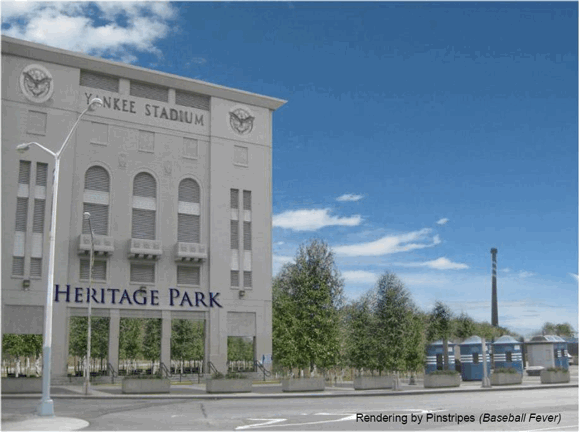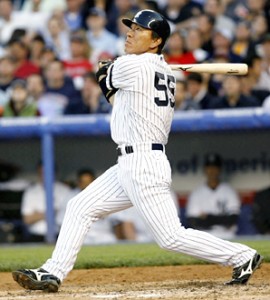
Proponents say Gate 2 could be saved for $1 million. (Image via Save the Yankee Gate 2 Committee)
When we last checked in with the committee working to save the old Gate 2 and incorporate it into the design of Heritage Park, the movement had seemingly hit a cost problem. A few anonymous critics of the plan had leveled the charge that the effort would cost $10 million. While a nice idea, saving old Yankee Stadium’s Gate 2 would be cost prohibitive. Plus, they said, the gate was “significantly changed” during the 1970s renovations.
Today, the group hit back. In a press release, Mark Costello and John Trush, the two men spearheading the preservation effort, claim that it would cost just $1 million to save Gate 2 and that most of the gate is original. “Assessments we have received from several architects and structural engineering firms have determined preserving Gate 2 to be a simple/straightforward project,” the release reads. “They have estimated that the expense of its restoration would be approximately $1 million, a small fraction (less than 2%) of the overall cost to build Heritage Field.”
To those decrying the originality of the gate, Costello and Trush have done their homework. “Today Gate 2 is 80 percent original, even after the 1973-76 renovations,” they say. “Historical photographs, blueprints, historians, and baseball experts confirm this originality. The small modifications made to the upper portion of the Gate are compatible with the original 1920’s design and if retained in the preserved Gate, would allow it to include elements of the 1923 construction, the 1928 expansion and the 1976 modernization.”
More vital to the effort to earn support though is the revelation that the group could defray even these relatively minimal costs through volunteer work. “Discussions with several contractors indicate their willingness to volunteer services for this effort,” they announced. “Similar to the current Polo Grounds Staircase Project, fundraising through pledges can produce additional financial options. The sale of commemorative paving bricks also has the potential to defray much of this cost.” I would buy a commemorative brick in front of the old Yankee Stadium Gate 2.
The group also commented on the need to preserve something from the Gate, a theme I touched upon last time. If the city destroys all of Yankee Stadium in their efforts to build the park, we can’t get it back once we look around and realize our baseball history is gone. The City’s Design Commission has asked the Parks Department to reevaluate their plans for Heritage Field in an effort to “capture the historical significance of the original Yankee Stadium.” Gate 2, with its minimal upkeep costs, would be the perfect vehicle for that request.
In the end, this may be a movement without a big enough sponsor. While a Daily News poll in August found 78 percent of readers would support this plan even with a $10 million price tag, no one has stepped forward from the Yankees to embrace it. Craig Calcaterra today urged A-Rod to throw his weight behind it in the form of a public commitment of support and money. The Yankees could easily make the same gesture, and if $1 million is the true cost of this plan, neither A-Rod nor the Yanks would notice the money is missing.
On Monday, the group is going to meet with the Bronx Borough President, and leaders have been trying to drum up support from other local politicians. Meanwhile, with Gate 2 currently shrouded by construction netting, time is of the essence. Will the city destroy history or will cooler heads prevail before it is too late?
